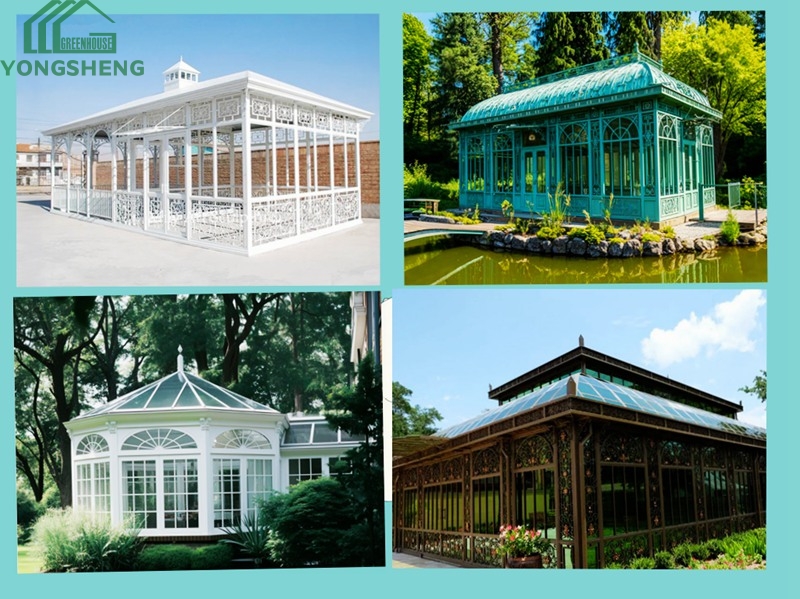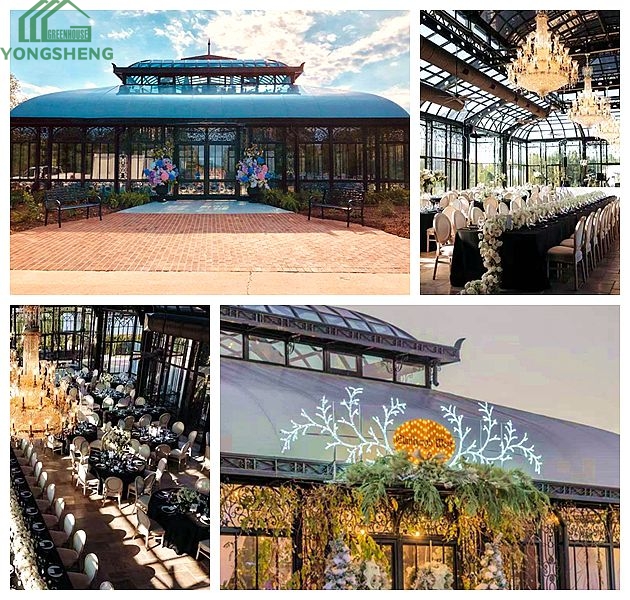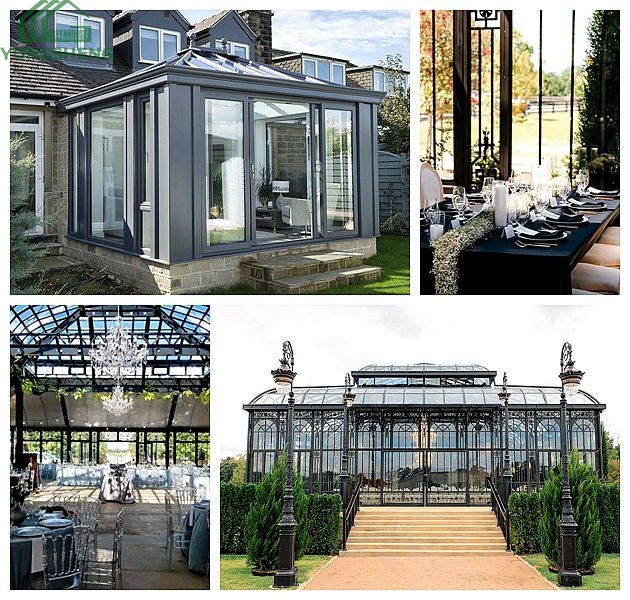Victorian Greenhouses: A Timeless Blend of Elegance and Functionality
In the world of gardening and outdoor living, Victorian greenhouses stand as a testament to the harmonious marriage of timeless elegance and practical functionality. These structures have captivated the hearts of gardening enthusiasts and homeowners alike for centuries, and their allure continues to grow.
The Victorian era, spanning from 1837 to 1901 in the United Kingdom, was a time of great prosperity, innovation, and a burgeoning interest in botany. This period saw the rise of the Victorian greenhouse, which was not merely a utilitarian structure for plant cultivation but a work of art that adorned the gardens of the wealthy and the aspiring middle class.
One of the most striking features of a Victorian greenhouse is its intricate ironwork. The frames, often crafted from wrought or cast iron, are adorned with elaborate scrolls, filigrees, and decorative motifs. These ornate details not only add a touch of opulence but also serve a structural purpose, providing strength and stability to the greenhouse. The ironwork is typically painted in dark, rich colors such as black, green, or bronze, which contrast beautifully with the clear glass panels and the lush greenery within.
Speaking of glass panels, they are another defining characteristic of Victorian greenhouses. Large, expanses of glass are used to create a light – filled interior, allowing for maximum sunlight penetration. The glass used in these greenhouses is often of high quality, providing excellent clarity and durability. In some cases, the glass may be textured or patterned, adding an extra layer of visual interest. The combination of the ironwork and the glass gives Victorian greenhouses a unique, elegant appearance that is both sophisticated and inviting.
The roof of a Victorian greenhouse is also a notable feature. Many Victorian greenhouses feature steeply pitched roofs, which not only add to the dramatic silhouette of the structure but also help with drainage. In regions with heavy rainfall, the steep roof allows water to quickly run off, preventing waterlogging and potential damage to the greenhouse. Some Victorian greenhouses also have decorative finials or crestings on the roof, further enhancing their aesthetic appeal.
Beyond their aesthetic charm, Victorian greenhouses are highly functional spaces that provide an ideal environment for plants to thrive year – round.
The design of Victorian greenhouses allows for effective temperature and humidity control. The large glass panels allow sunlight to enter, which heats the interior of the greenhouse. During the winter months, this solar gain helps to keep the greenhouse warm, reducing the need for excessive heating. In the summer, proper ventilation is crucial to prevent the greenhouse from becoming too hot. Victorian greenhouses are often equipped with roof vents and side vents that can be opened and closed to regulate the airflow. Some modern – day Victorian – style greenhouses even come with automated ventilation systems that adjust the vents based on temperature and humidity sensors.
The ability to control humidity is also essential for plant health. By opening and closing the vents, as well as using methods such as misting or installing a dehumidifier, gardeners can maintain the optimal humidity level for their plants. This is particularly important for growing tropical plants or those that require a more humid environment.
The abundance of natural light in a Victorian greenhouse is a boon for plant growth. Sunlight is the primary source of energy for photosynthesis, the process by which plants convert light into food. The large glass panels of a Victorian greenhouse ensure that plants receive ample sunlight throughout the day, even during the shorter days of winter. Additionally, the orientation of the greenhouse can be carefully planned to maximize sunlight exposure. In the Northern Hemisphere, for example, positioning the greenhouse to face south will allow it to receive the most sunlight.
Some gardeners may also choose to supplement natural light with artificial grow lights, especially during periods of low light or when growing plants that require specific light conditions. However, the natural light provided by the greenhouse’s design is often sufficient for many common garden plants.
Victorian greenhouses offer protection from harsh weather conditions and pests. The glass panels shield plants from wind, rain, hail, and frost, creating a more stable environment for growth. This is especially beneficial for delicate plants that may be damaged by extreme weather. Additionally, the enclosed structure of the greenhouse helps to keep out pests such as insects, birds, and small animals, reducing the risk of damage to plants.
Today, Victorian greenhouses are not just for growing plants. They have evolved into versatile spaces that can be used for a variety of purposes.
For gardening enthusiasts, a Victorian greenhouse is a dream come true. It provides a dedicated space to grow a wide range of plants, from exotic orchids and tropical fruits to traditional vegetables and herbs. Gardeners can experiment with different plant varieties, extend the growing season, and create a lush, green oasis in their own backyard. The greenhouse also allows for greater control over the growing environment, which can lead to healthier plants and higher yields.
Beyond its gardening functions, a Victorian greenhouse can be a serene retreat. Imagine sitting inside on a rainy day, surrounded by beautiful plants, sipping a cup of tea, and reading a book. The peaceful atmosphere of the greenhouse, combined with the gentle sound of raindrops on the glass, creates a calming and rejuvenating space. Some people even use their Victorian greenhouses as a place for yoga, meditation, or simply to unwind after a long day.
Victorian greenhouses can also be used for entertaining guests. With some careful planning and decoration, the greenhouse can be transformed into a unique and charming venue for parties, dinners, or afternoon tea. The natural beauty of the plants and the elegant architecture of the greenhouse provide a stunning backdrop for any occasion.
If you’re considering adding a Victorian greenhouse to your garden, there are several factors to keep in mind.
The first step is to assess the available space in your garden. Victorian greenhouses come in a variety of sizes, from small, compact structures that are perfect for a small backyard or balcony to large, spacious greenhouses that can accommodate a vast collection of plants. Consider how much space you have to work with, as well as your future gardening needs. If you plan to grow a large number of plants or use the greenhouse for other activities, you may need a larger size.
The materials used in the construction of a Victorian greenhouse are crucial for its durability and performance. Look for greenhouses made from high – quality materials such as aluminum or galvanized steel for the frame, as these materials are resistant to rust and corrosion. The glass panels should be thick and sturdy, and may be single – glazed, double – glazed, or even triple – glazed for better insulation. Some modern greenhouses also offer polycarbonate panels as an alternative to glass, which are lightweight, shatter – resistant, and provide good insulation.
There are many different designs and styles of Victorian greenhouses to choose from. Some feature a classic, traditional design with a steeply pitched roof and ornate ironwork, while others may have a more modern interpretation of the Victorian style. Consider the architecture of your home and the overall style of your garden when choosing a design. You may also want to look for a greenhouse that offers customization options, such as the ability to add a porch, additional windows, or special features like automated ventilation or heating systems.
Finally, consider your budget. Victorian greenhouses can vary widely in price depending on the size, materials, and features. Set a budget before you start shopping and look for a greenhouse that offers the best value for your money. Keep in mind that investing in a high – quality greenhouse may cost more upfront but can save you money in the long run by lasting longer and providing better performance.
In conclusion, Victorian greenhouses offer a unique combination of elegance, functionality, and versatility. Whether you’re a passionate gardener, someone looking for a peaceful retreat, or a homeowner who wants to add value and charm to their property, a Victorian greenhouse can be a wonderful addition. With careful planning and consideration, you can find the perfect Victorian greenhouse to suit your needs and create a beautiful, functional space that you’ll enjoy for years to come.
Why Choose US?
-
● As the first manufacturer in China to introduce the Victorian conservatory design from Europe, we have 36 years of production experience since 1988, and our products are distributed in 68 countries.
-
● We have a professional team of 8 conservatory design engineers and 60 production workers. We are equipped with 2 hot-dip galvanizing machines, 2 steel shot blasting machines, and 1 spray line.
-
● Our professional design team can provide theoretical calculation data support for wind pressure resistance, earthquake resistance, and snow resistance of large-scale steel structure conservatories.
-
● Strict quality control. 8 inspection stages: raw material inspection, cutting and blanking size inspection, welding quality inspection, hot-dip galvanizing quality inspection, spray quality inspection, assembly quality inspection, and packaging quality inspection. Ensuring smooth assembly of the products, no rust, no leakage, and compliance with customer national standards.
-
● We cooperate with many well-known architectural design companies worldwide.
-
● Customized services. We can customize according to customer designs and dimensions. We also provide supporting facilities such as electric sunshades and air conditioners.
-
● We offer installation dispatch services, inspection services, and free replacement of parts. We also present high-value exquisite gifts.
-
● Video factory tour. You can view the entire production process.






